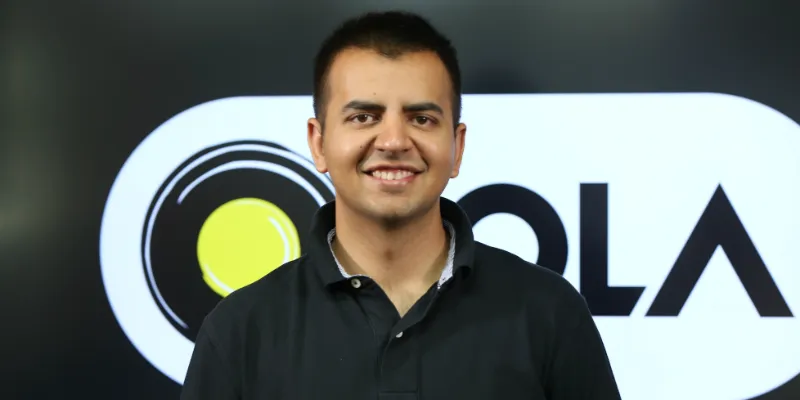Ola launches self-drive platform Ola Drive, aims to host 20,000 cars by 2020
Ride hailing unicorn Ola has launched its self-drive platform, called Ola Drive. The service will start operations in Bengaluru, and the team is looking to add 20,000 cars by 2020.
Bengaluru-based ride hailing unicorn Ola on Thursday announced the launch of its self-drive car-sharing platform, Ola Drive. Ola, which currently claims to be having over 200 million subscribers, is looking to on-board over 20,000 cars by 2020. The team will also be investing $200 million for Ola Drive’s expansion.
Addressing a press gathering at the Ola head office in Bengaluru, Arun Srinivas, Chief, Sales and Marketing, Ola, said: “Looking at mobility at large, we have accelerated our growth across different mobility spaces. We have expertise in serving millions of customers through a large fleet of vehicles across 250-plus cities, and now we are adding Ola Drive to this.”
To being with, the team will be offering the service for a period of two-to-three months. People can avail this facility with a starting security deposit of Rs 2,000. Customers have the flexibility to pay only for the number of kilometres and hours that the car is used.
In the first phase, the service will be rolled out as a short term self-drive car sharing service. The team will soon be providing long-term subscriptions, as well as corporate leasing.
The customers will also have the flexibility to design their own packages, have their option of Ola Play, and in-built navigation. The range of cars include economy and premium hatchbacks, premium sedans, compact and premium SUVs, and luxury cars. Ola will also offer 24/7 roadside assistance, emergency response service, and driving analytics all in-app.

Ola Co-founder Bhavish Aggarwal
This will be Ola’s 10th mobility category. The ride hailing unicorn has also been aggressively pushing into the electric vehicle segment with its entity - Ola Electric, which attained the unicorn status this year. Apart from this, Bhavish Aggarwal, Co-founder and CEO, Ola, recently stated that Ola India operations are currently profitable.
At the 10th edition of YourStory’s flagship TechSparks event, Bhavish spoke about the team’s vision of building Ola into a global Indian consumer brand, and confirmed that the company, which has been rapidly expanding into new markets and verticals, is now “absolutely focussed” on going public, and is eyeing an IPO in the next 18-24 months.
Bhavish added, “Today, we are running our business profitably in India and there is no vanity metrics, and it’s the real bottomline. We’ve built a stable business, and now we want to go global. Our ambition is to build an Indian consumer business on a global scale. Today, there are no Indian brands on a global scale and it’s not because we couldn’t do it; the stars just didn’t align. The domestic market is complex, but in the next decade, there will be several Indian brands, and in mobility, we want to be the leading player.”
Until last year, Ola was only India-focussed. But today, it has expanded beyond India to Australia, New Zealand, and the UK, with a presence in over 250 cities. In addition to expanding its geographical footprint, the company has also expanded into foodtech and the electric mobility segment, making great inroads in both these ventures in a matter of months.
Describing Ola’s eight-year journey, Bhavish said,
“The first phase was the romantic phase - no money, no people, and no tension.” This was the phase from 2011 to 2013. It was about hitting the ground running. Bhavish said there were days he would drive people himself.
Then came the phase of accelerated growth, where you’re pushing towards aggressive penetration in the market, and competition was intensive. “The competition was spending a lot of money, and we were spending a lot of money. We were growing at a massive scale,” Bhavish recollected. This lasted till 2017.
The business and industry then hit a certain scale, which led to consolidation while you continue to grow. “You need to put better organisational structure, and find people who work well in the stabilisation phase, but wouldn’t have worked in the earlier stages,” said Bhavish. Ola India business is in the stabilisation phase, but Ola electric is in the startup phase.
“The key challenge we have faced in the last few years was managing the scale. It’s easy to manage scale when you don’t have to make money, but when you have to build a real business, things change. We get into the same trap as a large MNC, so it’s important to have the pulse of the ground,” said Bhavish.
It’s important to see customers, meet people, and grow. “For me it is about focus on where the value has been created and it is on the ground, while building operational excellence, and bringing in operational efficiencies,” he said.
In the past few years, Ola has invested in the likes of Riddlr and even entered the foodtech space with Foodpanda. Bhavish said, they are looking at new consumer growth categories and avenues.
“When it comes to food delivery, we were thinking we have the logistical scale and similarities with our vehicle fleet, but we were late in the food delivery game, and are now in private cloud kitchens, which is doing well and is profitable. Riddlr is a great technology platform and is one of the biggest in ticketing business. Some have worked well, some haven’t. But you learn from your mistakes and move forward,” said Bhavish.
(Edited by Megha Reddy)









